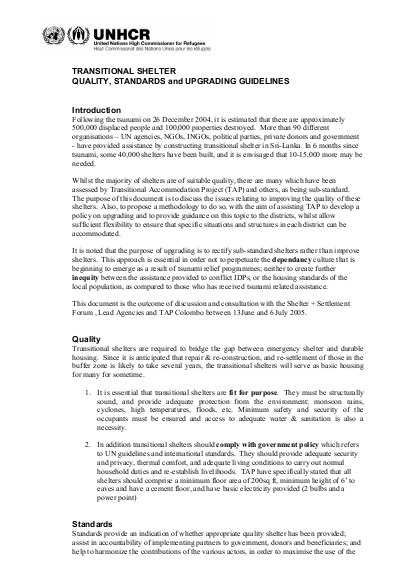
Transitional shelters are required to bridge the gap between emergency shelter and durable housing. Since it is anticipated that repair & re-construction, and re-settlement of those in the buffer zone is likely to take several years, the transitional shelters will serve as basic housing for many for sometime. 1. It is essential that transitional shelters are fit for purpose. They must be structurally sound, and provide adequate protection from the environment; monsoon rains, cyclones, high temperatures, floods, etc. Minimum safety and security of the occupants must be ensured and access to adequate water & sanitation is also a necessity. 2. In addition transitional shelters should comply with government policy which refers to UN guidelines and international standards. They should provide adequate security and privacy, thermal comfort, and adequate living conditions to carry out normal household duties and re-establish livelihoods. TAP have specifically stated that all shelters should comprise a minimum floor area of 200sq ft, minimum height of 6’ to eaves and have a cement floor, and have basic electricity provided (2 bulbs and a power point)